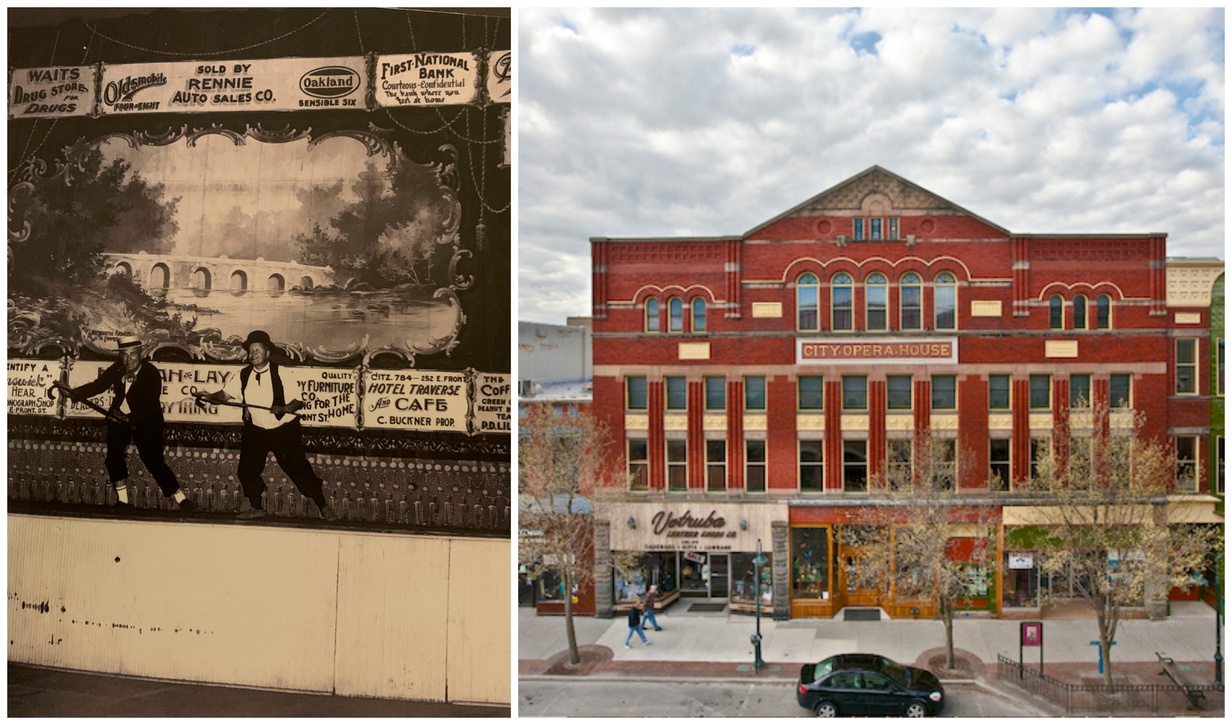
No Opera In The House: The Varied History Of Traverse City's City Opera House
By Ross Boissoneau | Jan. 5, 2020
These days, it’s easy to enjoy Traverse City’s own City Opera House: comedians and concerts, lectures from famous authors and more. But did you know it got its name because the alternative was considered “immoral?” Or that opera wasn’t actually performed there for more than a century? Or that while 50 similar opera houses once existed across the state, only seven restored versions remain?
“By the 1880s, there was enough vision to think people in Traverse City needed this,” says local historian Fred Anderson, who also volunteers at the City Opera House. That despite the fact Traverse City was not incorporated as a city until 1895. “Cultural amenities were valued then as now,” says Anderson. As proof, he offers the fact that back in 1893 there was a Shakespeare society in Traverse City.
The City Opera House (COH) was the vision of early city leaders Anton Bartak, Frank Votruba and Charles Wilhelm. Work began in July of 1891, and Anderson says construction took only about six months, at a cost of about $50,000. It hosted a pre-opening dinner that December; on February 5, the City Opera House publicly opened with ballroom dancing and dinner.
While like other such performance venues around the country it was dubbed an opera house, there wasn’t any opera performed there – at least, not until the first Wine & Opera Festival in 2011, courtesy of winery owners and opera enthusiasts Mario Tabone and Silvio “Tony” Ciccone. Its name was originally chosen because at the time a theater was considered “immoral and uncouth,” as Michigan Historynotes. Dubbing it an opera house gave it gravitas and dignity – despite the fact such venues were likely to host everything from wrestling matches to livestock, as well as vaudeville and musical presentations. In fact, according to the COH website, it hosted horse shows and donkey basketball games.
Michigan was once home to some 50 such buildings, from Detroit’s grand opera house to those further north, from Sparta to Cheboygan to Traverse City. Today only a dozen or so survive; seven have been restored and are in use, including the latter two.
Anderson says the decision to construct such a building hinged on the potential early Traverse City organizers saw in the city. “Originally it was going to be smaller, then they expanded the idea … to hold 1,200 people.” With a population that Anderson estimates at about 4,000, that would be comparable to putting a 5,000-seat arena in downtown Traverse City.
It now seats just under 700. Anderson owns one of the original chairs, which he says is much smaller than today’s seats. “It’s like a camp chair with a back,” he says with a laugh. He also notes that with 1,200 people squeezed in – with no air conditioning – it would have been stiflingly hot.
By the 1920s, the COH was closed. “Talkies came in,” explains Anderson. To prevent any competition with its movie theaters on East Front Street, the motion picture firm Fitzpatrick & McElroy leased the City Opera House and closed it.
In the 1940s it was rented out for a Works Progress Association project creating miniature city buildings. From the mid-40s until 1985, the new owner of the building, William Votruba, and family friends informally conducted local group tours in the shuttered building. “It was closed a large part of its history,” says Anderson.
It was added to the National Register of Historic Places in 1972, and was donated to the city by the Votrubas in 1980. Shortly after that, the City Opera House Heritage Association was formed, dedicated to restoring and reopening it. Restoration took place in three separate phases: 1985, 2002 and 2007. Work has included the addition of handicap accessible facilities, restrooms on the second and third floors, and the Bryan Crough dressing rooms. Separate dressing rooms for male and female performers enabled it to host Actors Equity Association performances, which contractually require them.
Despite the ravages of time and some less-than-appropriate activities, it still contains most of its original furnishings and decor, including balcony seats, box seats, backdrops, and the large stage curtain. Anderson wishes the original curtain could be used more often, but acknowledges, “The original curtain is very heavy.” Good thing, since one of the activities the City Opera House hosted in the late 60s was golf lessons. “They drove the balls into the screen,” says Anderson.
Today it is a non-profit which hosts numerous performances, from folk, jazz, classical, roots and world music to theatre and comedy in conjunction with the Wharton Center for the Performing Arts at Michigan State University. Rentals and community-sponsored events include the National Writers Series, the Traverse City Film Festival, Traverse City New Tech’s meetings, weddings, proms and family reunions.
And it’s not done. Plans are now in development for future improvements.
City Opera House celebrates 128 years the first week in February.
Comment






